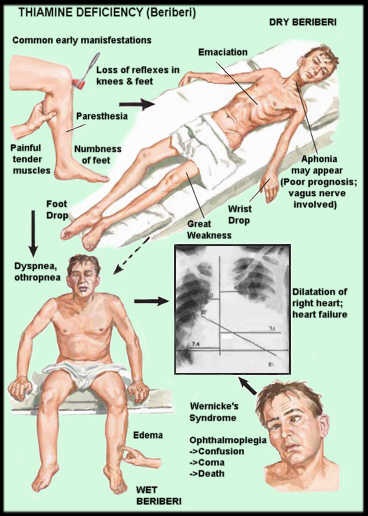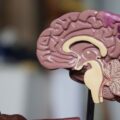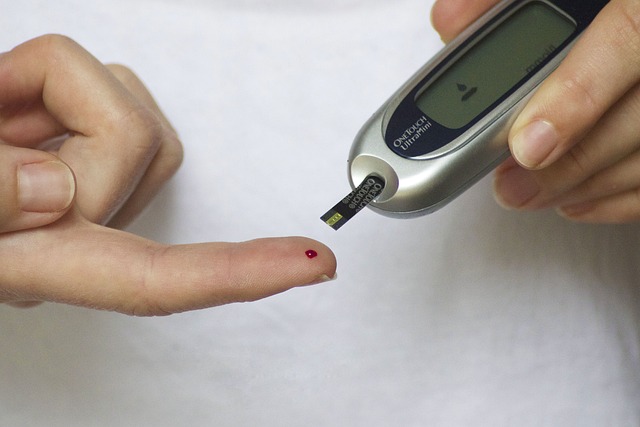Posted on Child Health and Safety on January 13, 2015 was an announcement that vaccines had been proven to cause sudden death in children (SIDS). The announcement indicated that death in 67 cases was only explicable as caused by vaccines. Drug safety regulators were said to have had the information for over two years. In this post, I am going to contest vaccination as the sole cause and try to explain why I think it is a much more complex problem.
In 2001, I published a paper that hypothesized the requirement of three variables: Sudden infant death syndrome requires genetic predisposition, some form of stress and marginal malnutrition. I have just published another paper on the same subject: Thiamin and Magnesium Deficiencies: Keys to Disease.
What History Tells Us about SIDS
Back in the seventies, I was working at Cleveland Clinic in Cleveland Ohio in the Department of Pediatrics. At that time there was a great deal of professional interest in SIDS. In the course of my research, I had found a paper written in a prestigious medical journal in 1944 by a British Medical Officer of Health by the name of Lydia Fehily. Readers will remember that Hong Kong was then a British protectorate and Fehily was sent out from England in order to investigate a common form of sudden death in breast fed infants of Chinese mothers in the colony.
A little bit of history is important to the final solution. Before World War II, the Japanese had invaded China. The rice ration was cut to starvation levels, thus cutting down the calorie intake. Although the symptoms of starvation prevailed in the mothers and the infants, the sudden infant death had disappeared. After the Japanese were driven out, the pregnant mothers in Hong Kong had as much rice as they wished. The calorie intake had been restored, overwhelming the required concentration of vitamin B1 for adequate oxidation of the calories. The sudden death in the breast fed infants immediately reappeared.
Fehily had discovered that the reemergence of SIDS was due to infantile beriberi because the infants were fed by vitamin B1 deficient breast milk (Human milk intoxication due to B1 avitaminosis). Those affected were almost always regarded by their mothers as the healthiest appearing infants in the family prior to their death. These events were rare under two months and after six months of age. It occurred almost always at night, was often associated with a runny nose interpreted as a mild cold and was more common in winter months. The epidemiology of this is almost exactly like that of modern SIDS. Although the modern interpretation is related to the positioning of the infant in the crib, it is certainly not the whole story. I came across the report of a meeting of beriberi researchers held at that time. A statement in that report had said that:
“any sudden otherwise inexplicable infancy death is a guarantee of infantile beriberi. No other disease has a similar outcome”.
Predicting SIDS
During the early part of the seventies it was thought that SIDS could not be predicted, that there were no symptoms to provide a warning. Later on in the decade, it was shown that there was such a thing as “threatened SIDS” judged by a few non-specific symptoms. Coincidentally, an alarm system had been invented that an infant could wear in the crib. It indicated when breathing stopped for a given interval or when the heart slowed. If and when such a thing happened, it was very easy to resuscitate the infant by a simple slap on the buttock.
SIDS, Thiamine and Brain Development
I began to admit infants with this kind of history to the hospital and place them on an alarm system. Believe it or not, by giving thiamine by injection to these infants, the alarms ceased to be initiated. I found this to be very exciting and I continued my research. I even went to Australia to do sabbatical research with the late Dr. Read at the University of Sydney who had evidence of implication of thiamine metabolism in SIDS. I found that there were families where SIDS had been occurring in more than one related infant. There was no pattern that indicated a direct genetically determined outcome and I concluded that it was a genetic risk rather than a genetically determined disease.
The overall logical conclusion to this series of facts was as follows:
- That genetic risk implied an unusually well developed brain that required a great deal of energy to function. The only means by which this could be acquired was through pristine nutrition for the mother during pregnancy.
- That calories from simple carbohydrate with insufficient thiamine was extremely dangerous. (Note that rice rationing had stopped the infancy deaths in Hong Kong). The brain of an infant in the first six months of life grows at a tremendous rate and the oxidation of glucose to provide the required energy is crucial. Vitamin B1 is essential to that oxidation. This had been shown by Dr. Peters in Cambridge, England as early as 1936.
- That some form of stress may or may not be necessary, depending on the state of biochemistry in the brain. The infant is already at risk at birth because of the nature of nutrition supplied by the mother during pregnancy. A state of marginal malnutrition in the infant is insufficient to meet the energy demands of adapting to the vaccination as a stress factor.
Readers of this website may or may not be aware of a series of posts on the relationship of post Gardasil postural orthostatic tachycardia syndrome (POTS) with thiamine deficiency. I believe that this post on SIDS bears comparison with the logical reasoning applied in that post. Also, Dr. Marrs has repeatedly pointed out the relationship between drugs and seemingly unrelated disease caused by them.
Does Thiamine Deficiency Underlie Post Vaccination SIDS?
The epidemiology (study of cause) of infantile beriberi (vitamin B1 deficiency) is sudden death. The commonest time for this is between three and four months and more commonly in male infants. Although this is almost the exact epidemiology of modern SIDS, this well researched truth is ignored. The classical vitamin deficiency diseases (beriberi, pellagra, scurvy) are considered to be of only historical interest because vitamin enrichment of foods has abolished them. This is simply not true. A high intake of sugar in the form of simple carbohydrate, empty calories is widespread in America and other Westernized countries, automatically overwhelming the insufficient concentration of vitamin B1, the equivalent of a choked engine in a car. “Soft” drinks are all too well advertised and encouraged in opposition to the consumption of “hard” alcohol that is regarded as more dangerous. Although the dangers of alcohol are well known, the danger of “soft” and “Diet” drinks, particularly during pregnancy, is almost totally unknown to consumers who erroneously believe they are preventing weight gain and contributing to personal health. The advertising is misleading.
Looking again at history, we also know that the very first symptoms of beriberi could occur in a group of patients when exposed to sunlight. We now know that ultra violet light is very stressful to the human body, demanding an adaptive “stress” response that is automatically initiated by the lower part of the brain, the limbic system and brainstem. The word “stress” must be used in its proper connotation. It must be defined as a mental or physical force to which we have to adapt. For an infant, stress would include weather changes, infection, trauma, vaccination, partial suffocation from being placed in the prone position, inhalation of chemicals in the crib mattress and other possible variables. This part of the brain is particularly sensitive to thiamine deficiency, diminishing the supply of energy required by the cells in order to perform this complicated adaptive process.
We live in a hostile environment to which we have to adapt automatically 24 hours a day by brain/body mechanisms initiated by the lower brain. Damaging the brainstem affects the nervous control of automatic breathing and control of heart rhythm. Thus, breathing or heart beat may cease in an infant during sleep when thiamine deficiency prevails. During the first six months of life brain growth is tremendously fast, requiring an enormous amount of energy. I am proposing that the infant with the highest, genetically determined brain energy requirement is more at risk. If this is true, the tragedy of SIDS may be removing the most superior future citizens. Obviously, the mother’s diet must provide a proper balance between the calories that provide the fuel and the capacity of the cell to burn the calories by means of the appropriate vitamins. Because we now know that sufficient thiamine or vitamin B1 is critical to prevent beriberi and I have published evidence for deficiency of this vitamin in threatened SIDS, it makes sense to consider the interplay of three variables in SIDS. The three variables are as follows:
- Genetic risk, “e.g. a high brain energy requirement”
- A non specific stress factor, “e.g. vaccination”
- Marginal high carbohydrate calorie malnutrition
It also makes sense to consider the possibility that the stress of vaccinations is too great a risk for infants who are genetically and/or environmentally predisposed to oxidative damage in the brainstem.
We Need Your Help
More people than ever are reading Hormones Matter, a testament to the need for independent voices in health and medicine. We are not funded and accept limited advertising. Unlike many health sites, we don’t force you to purchase a subscription. We believe health information should be open to all. If you read Hormones Matter, like it, please help support it. Contribute now.
Yes, I would like to support Hormones Matter.
Image: PickPic royalty free.
This article was published originally on Hormones Matter on January 21, 2015.




















